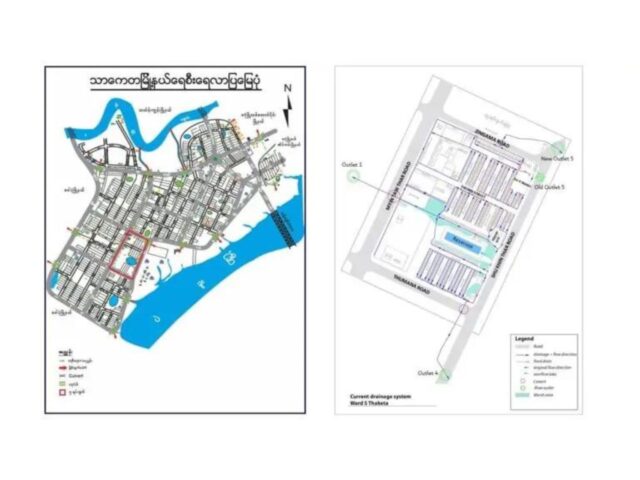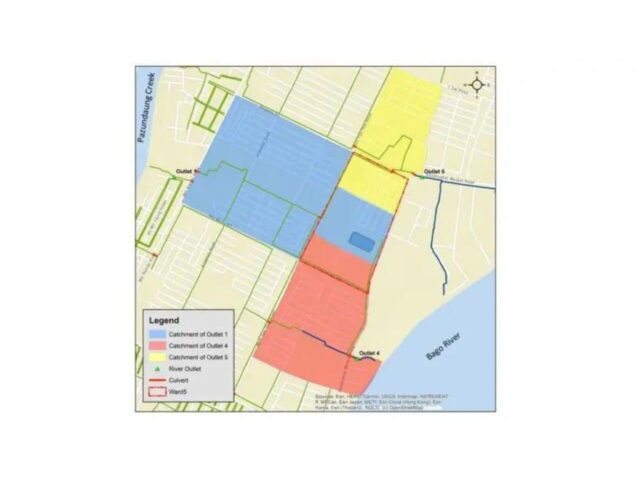The internal drains are the smallest elements of the whole urban drainage system. In Yangon, the internal drains are the drains along the residential roads and in the back alleys. The following map shows the internal drains of Ward 5 in Thaketa.

The internal drains (Figure (a) and (b)) collect the rainwater falling on the surface and on rooftops of houses and other built structures. Through a network of drains the water flows all the way to the outlets (Figure (c)) and into the river. To learn more about the complete drainage system of Thaketa, see here.
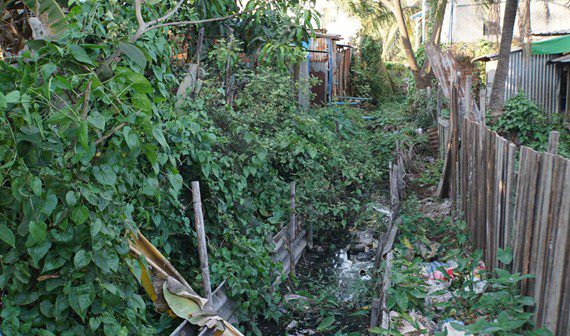
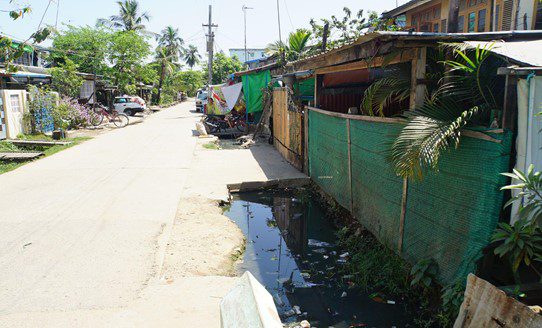
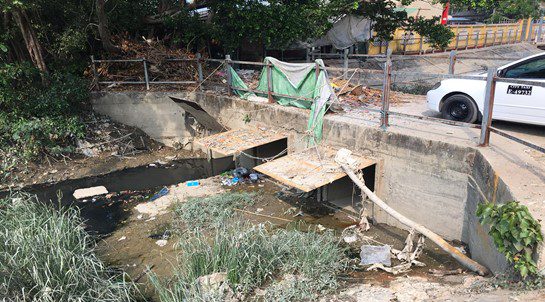
Flooding in Thaketa
Due to the location of the neighbourhood Thaketa, surrounded by two rivers (Bago river on the east and Pazundaung creek on the west), the drainage system is influenced by the water levels in these rivers, including the effect of tide. (See more about the tide in this topic.) Flooding mostly occurs during the combination of spring tide (the highest tide taking place twice a month) and rain, especially where the drains are blocked. It usually lasts 1 to 2 hours per day while there is heavy rain and high tide. Only a few plots have never experienced heavy flooding, and 90% of the households have problems with the drainage system every day. The flood usually affects the informal settlements, which are located at a low-lying areas in the ward. Extreme flooding in the past 2008 Nargis Cyclone event brought 2 to 3 feet of water depth in the ward.
Relation to climate resilience
To minimize the risk of flooding and of stagnant water in the drains, which can lead to health issues, the internal drains should be functioning well.
Possible reasons for (partly) non-functioning drains are:
- insufficient design
- in terms of capacity (the size is not big enough)
- in terms of water flow (levels are not correct so water cannot flow well)
- issues with culverts and outlets (e.g. lack to provide in some locations, issues with level, and functioning of gates etc.)
- blocked by waste
- not maintained well or broken
A good functional drain not only means that it can carry the rainwater efficiently out of the area, but also there is no waste and trash in the drains. Properly designed and maintained drains are important for a healthy and safe living area, since these will reduce the risk of flooding, water-related diseases and improve overall well being and livability to their direct environment.
A well functioning internal drainage system can also improve the overall buffer capacity of the drainage system: meaning that during heavy rain, the water can temporarily stay in the internal drains, before it can be drained towards the river.
It might also improve self-sustainability and social cohesion within the community. For the larger drainage system, the community is largely depending on the local government to provide a functioning drainage system, but they can also play an important role themselves to make sure this part of the drainage system works well.
Possible interventions related to the internal drainage system:
The several ways to keep the internal drainage system functioning are:
- improving the waste management system by YCDC (see here)
- improving the operation and maintenance of the drains by the community such as yearly cleaning events before monsoon and general behaviour related to waste
- keeping the area clean, tidy and livable, e.g. through placemaking
- improving the design of the internal drains (levelling, design, materials, etc.) and building these, with the help of Ward Officer and the community
In this WIKI, we will focus on the final one: improving the technical design of the internal drains.


